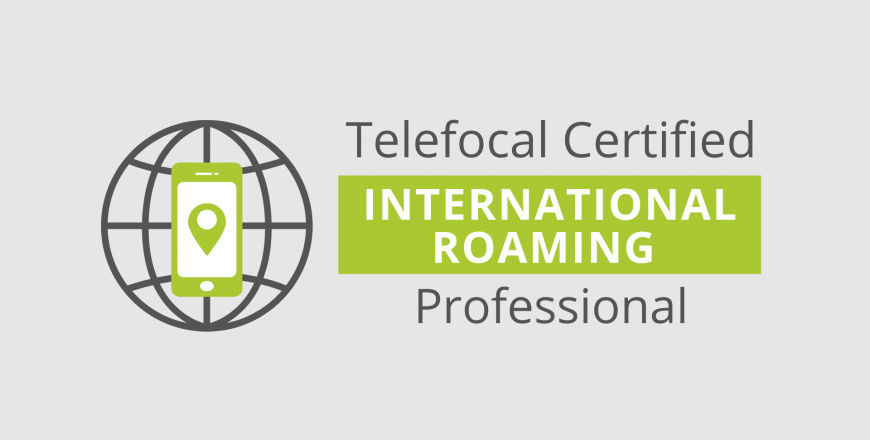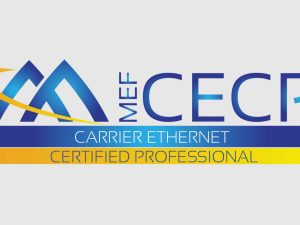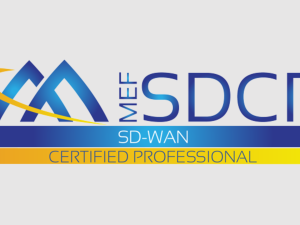Telefocal Certified International Roaming Professional (TC-IRP)

Course Overview
This 5-day certification course provides in-depth knowledge and practical skills necessary for designing and delivering scalable, highly-reliable LTE roaming services. The course covers a wide range of critical topics, including an overview of mobile networks, mobile numbering plans, and service management, ensuring a solid foundation for understanding global roaming environments.
Participants will delve into mobile security management and explore roaming networks, with a focus on roaming service analysis, signaling in roaming, and the evolution of roaming in modern networks. In addition, the course covers the complexities of roaming agreements and testing, while addressing key areas of billing and fraud management.
The course emphasizes real-world applications, offering network configuration examples to help participants translate theory into practice. They will also gain expertise in scalability and redundancy strategies, and regulatory compliance and policy frameworks, ensuring their solutions are aligned with industry standards and regulations.
Upon completing all topics and modules, participants will sit for a certification exam, validating their expertise and readiness to excel in the field of international roaming. The course materials and exam for this training are designed and delivered by Telefocal’s panel of LTE and International Roaming subject matter experts.
The TC-IRP certification exam will assess the candidate’s knowledge of the skills required to understand and implement technologies, architecture fundamentals, and infrastructure that are needed for LTE roaming between international networks.
Target Audience
- Telecom professionals, network engineers, roaming managers, and service providers involved in the design, management, and optimization of LTE roaming services
- Professionals in billing, fraud management, regulatory compliance, and mobile security who want to deepen their understanding of international roaming operations
Duration & Training Format
Instructor-led Training
- Classroom: 5 days
- LIVE Virtual: 35 hours
- A minimum of 8 or more participants is required for a Classroom session to commence.
- A minimum of 6 or more participants is required for a LIVE Virtual session to commence.
- LIVE Virtual courses can be conducted for 5 hours or 7 hours daily. Please note that the number of training days will be extended if you opt for 5 hours daily.
Upcoming Course Dates
There are no upcoming course dates currently scheduled for this course. If you are keen on attending this course, please register your interest and indicate your preferred training dates via our course enquiry form for us to open a Classroom/LIVE Virtual class schedule for this course.
Course Outline
- Overview of Mobile Networks
- Introduction to GSM, 3G, 4G, and 5G Networks: Key components, architecture, and interfaces
- Comparative analysis of different network generations and their evolution
- Understanding the role of IMS (IP Multimedia Subsystem) Networks in modern roaming, including their functions and impact on network services
- Mobile Numbering Plans and Service Management
- Overview of GSM numbering plans and comparison with newer network generations
- Examination of mobile service management across different network generations
- Analysis of trends and challenges in modern service management
- Mobile Security Management
- Review of security measures across GSM, 3G, 4G, and 5G networks
- Exploration of roaming security challenges and innovative solutions
- Consideration of the importance of data protection and privacy in roaming
- Introduction to Roaming Networks
- In-depth overview of inbound and outbound roaming across different network generations
- Analysis of modern roaming architectures and technologies
- Understanding LTE roaming architecture: core network elements, interfaces, and protocols involved in facilitating seamless roaming for subscribers across different networks
- Roaming Service Analysis
- Examination of inbound and outbound roaming scenarios
- Voice and data service flow analysis in GSM and subsequent network generations
- Case studies of roaming service issues and troubleshooting techniques
- Signaling in Roaming
- Overview of SS7 signaling and its significance in traditional networks
- Transitioning from traditional signaling to modern protocols such as Diameter and SIP
- Case studies focusing on different signaling methods and their analysis
- Roaming in Modern Networks
- Understanding LTE and 5G roaming
- SIP signaling and call flows in modern roaming environments
- Case studies highlighting LTE and 5G roaming scenarios and their challenges
- Quality of Service (QoS) management: Techniques for prioritizing traffic, managing bandwidth, and enforcing QoS policies in LTE roaming to ensure optimal performance and user experience
- Roaming Agreements and Testing
- Establishing international roaming: commercial, technical, and testing aspects
- Examination of essential documentation such as AA.12, AA.13, AA.14, IR.21
- IREG and TADIG testing processes and associated documentation
- Roaming agreements and interconnection protocols: Exploring industry standards such as Diameter, GTP, and S6a/S6d for efficient roaming service delivery
- Billing and Fraud Management
- Convergence billing strategies for postpaid and prepaid roaming
- Analysis of CDR flows, TAP creation, and data usage in roaming scenarios
- Advanced techniques for managing fraud and resolving roaming disputes
- Advanced Roaming Topics
- Exploring VoLTE and VoNR (Voice over New Radio) in the context of roaming
- Impact of IoT (Internet of Things) and M2M (Machine-to-Machine) technologies on roaming networks
- Troubleshooting and optimization: Tools, methodologies, and best practices for maintaining high service availability and reliability in LTE roaming
- Scalability and Redundancy Strategies
- Techniques for designing scalable and redundant LTE roaming architectures
- Load balancing, traffic management, and failover mechanisms to enhance network resilience
- Regulatory Compliance and Policy Frameworks
- Regulatory requirements, compliance standards, and policy frameworks governing LTE roaming
- Understanding legal and regulatory considerations impacting roaming agreements, pricing models, and data privacy
- Future Trends in Roaming
- Investigation of emerging trends in international roaming, including new technologies and standards
- Exploring potential use cases for 5G in roaming, focusing on innovation and enhanced user experience
- Scoring 60% or higher in the written exam AND
- Achieving at least 75% attendance for the course.
Pre-requisites
Prior experience of working with fiber optics cables and systems.


